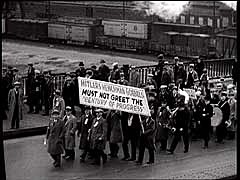You searched for: 合约理财投资源码搭建【TG���������@EK7676】平台包网搭建合约理财投资源码搭建【TG���������@EK7676】平台包网搭建1nFO9f1mTS
<< Previous | Displaying results 201-250 of 652 for "合约理财投资源码搭建【TG���������@EK7676】平台包网搭建合约理财投资源码搭建【TG���������@EK7676】平台包网搭建1nFO9f1mTS" | Next >>
-
Albert Speer
PhotoDefendant Albert Speer during the International Military Tribunal trial of war criminals at Nuremberg. Germany, between November 20, 1945, and October 1, 1946.

-
Joseph Goebbels at a rally in favor of the boycott of Jewish-owned shops
PhotoJoseph Goebbels, the Nazi minister of propaganda, speaks at a rally in favor of the boycott of Jewish-owned shops. Berlin, Germany, April 1, 1933.
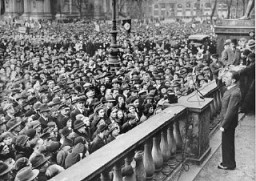
-
Members of the SA during boycott of Jewish-owned businesses
PhotoSA men in front of Jewish-owned store urge a boycott with the signs reading "Germans! Defend Yourselves! Don't buy from Jews!" Berlin, Germany, April 1, 1933.
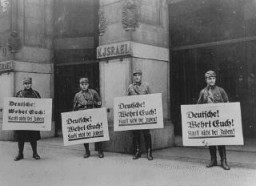
-
Anti-Jewish boycott
PhotoDuring the anti-Jewish boycott, an SA man stands outside a Jewish-owned store with a sign demanding that Germans not buy from Jews. Berlin, Germany, April 1, 1933.
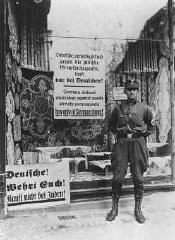
-
Crematorium in Dachau
PhotoA survivor stokes smoldering human remains in a crematorium oven that was still lit in the Dachau camp. Photograph taken upon the liberation of the camp. Dachau, Germany, April 29-May 1, 1945.
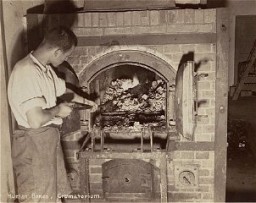
-
Anti-Jewish boycott poster in Berlin
PhotoA boycott sign posted on the display window of a Jewish-owned business reads: "Germans defend yourselves against Jewish atrocity propaganda. Buy only at German shops!" Berlin, Germany, April 1, 1933.

-
SS Lieutenant Colonel Arthur Roedl
PhotoSS Lieutenant Colonel Arthur Roedl, commandant of the Gross-Rosen concentration camp. Gross-Rosen, Germany, between May 1, 1941, and September 15, 1942.
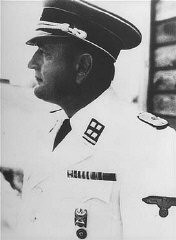
-
Investigating German atrocities
PhotoMembers of a US congressional committee investigating German atrocities view the emaciated body of a dead prisoner at the Dora-Mittelbau concentration camp, near Nordhausen. Germany, May 1, 1945.
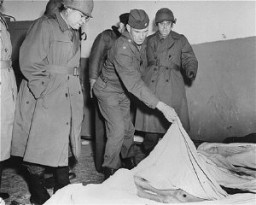
-
Training in farming skills
PhotoJewish youth attend a class on transplanting seedlings, part of a general course in farming sponsored by the American Jewish Joint Distribution Committee at the Bergen-Belsen displaced persons camp. Germany, August 1, 1946.
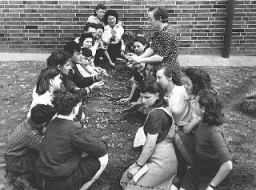
-
Tehran Conference
PhotoSoviet leader Joseph Stalin (left), US president Franklin D. Roosevelt (center), and British prime minister Winston S. Churchill (right) at the Tehran Conference. Tehran, Iran, between November 28 and December 1, 1943.
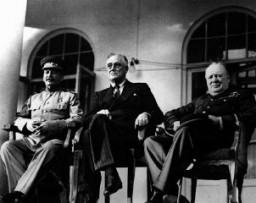
-
Boycott sign
PhotoScene during the boycott of Jewish businesses. A sign on truck carrying Storm Troopers (SA) urges "Germans! Defend yourselves. Don't buy from Jews." Berlin, Germany, April 1, 1933.

-
A mother and daughter living in a container
PhotoA mother checks on her sick daughter inside the container where they live in an internally displaced persons (IDP) camp near Erbil, Iraqi Kurdistan. September 1, 2015.
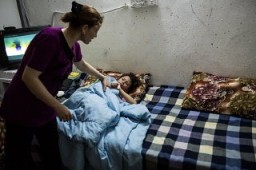
-
Soviet prisoners of war under German guard
PhotoAt left, a column of Soviet prisoners of war, under German guard, marches away from the front. Place uncertain, July 1, 1941.
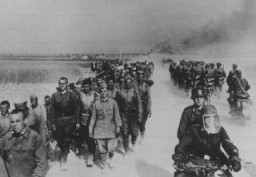
-
Press reports of the sentences handed down by the International Military Tribunal
PhotoPeople gather in the street to read a special edition of the Nurnberger newspaper reporting the sentences handed down by the International Military Tribunal. Nuremberg, Germany, October 1, 1946.

-
Looking through the belongings of massacred Jews
PhotoSoldiers from unidentified units of Einsatzgruppe C look through the possessions of Jews massacred at Babi Yar, a ravine near Kiev. Soviet Union, September 29–October 1, 1941.
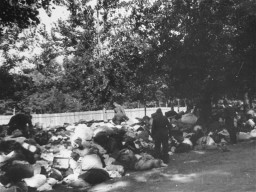
-
1946–1948: Key Dates
ArticleExplore a timeline of key events during 1946-1948. Learn about the aftermath of the Holocaust and the obstacles survivors faced.

-
SS officers and German nurses
PhotoSS officers and German nurses gather during the dedication ceremony of the new SS hospital in Auschwitz, September 1, 1944. Among those pictured are Karl Höcker, Josef Kramer, and SS-Hauptsturmführer Heinrich Schwarz.
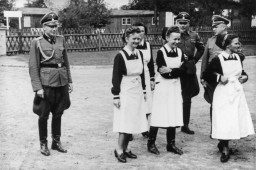
-
Crowd in Berlin during the anti-Jewish boycott
PhotoGermans in front of a Jewish-owned department store in Berlin during the anti-Jewish boycott. Berlin, Germany, April 1, 1933.
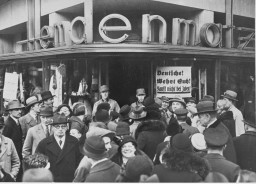
-
Mittelbau Main Camp: In Depth
ArticleLearn about conditions and forced labor in Dora-Mittelbau, the center of an extensive network of forced-labor camps for the production of V-2 missiles and other weapons.
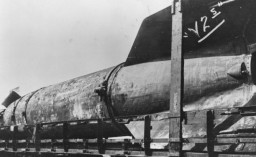
-
Freiberg
ArticleLearn about the Freiburg subcamp of Flossenbürg, including its establishment, prisoner population, and conditions there.
-
1942: Key Dates
ArticleExplore a timeline of key events during 1942 in the history of Nazi Germany, World War II, and the Holocaust.
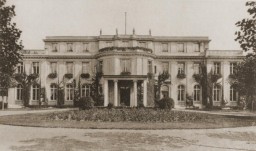
-
Berga-Elster ("Schwalbe V")
ArticleAt the Berga-Elster subcamp of Buchenwald, prisoners were forced to do dangerous and brutal work in tunnels to support fuel production for the German war effort.
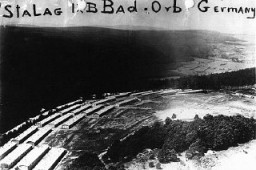
-
Auschwitz: Key Dates
ArticleExplore a timeline of key events in the history of the Auschwitz camp complex in German-occupied Poland.
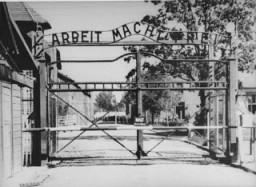
-
Fürstengrube
ArticleLearn about Fürstengrube subcamp of Auschwitz, including its establishment, administration, prisoner population, and forced labor and conditions in the camp.
-
1944: Key Dates
ArticleExplore a timeline of key events during 1944 in the history of Nazi Germany, World War II, and the Holocaust.
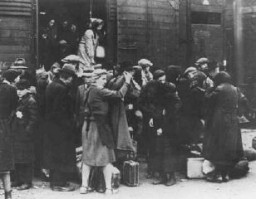
-
Tattoos and Numbers: The System of Identifying Prisoners at Auschwitz
ArticleLearn more about how the Nazis identified and tattooed prisoners at the Auschwitz concentration camp complex.
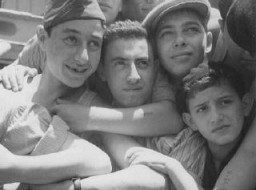
-
The Boycott of Jewish Businesses
ArticleThe "Jewish boycott" ("Judenboykott") of April 1, 1933, was the first coordinated action undertaken by the Nazi regime against Germany’s Jews. Learn more.

-
Invasion of Poland, Fall 1939
ArticleThe German invasion of Poland in the fall of 1939 triggered WWII. Learn more about key dates and events, causes, and related Holocaust history.
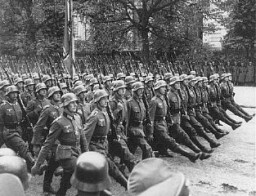
-
Moringen Youth Camp
ArticleThe Moringen camp was one of the so-called youth protection camps that the Nazi regime established for young people who were alleged to have strayed from Nazi norms and ideals.
-
Krakow Ghetto: Key Dates
ArticleExplore a timeline of key events during the history of the Krakow ghetto in German-occupied Poland.

-
Decree against Public Enemies
ArticleThe Decree against Public Enemies was a key step in the process by which the Nazi leadership moved Germany from a democracy to a dictatorship.
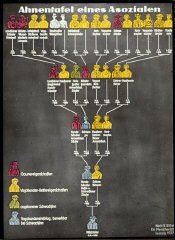
-
Mobile Killing Squads
ArticleLearn more about Nazi mobile killing squads (Einsatzgruppen) killing activities in the Soviet Union during World War II.
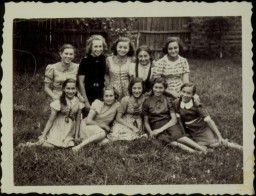
-
Nuremberg Trials
ArticleTrials of top surviving German leaders for Nazi Germany’s crimes began in Nuremberg after World War II. Read about the Nuremberg trials.
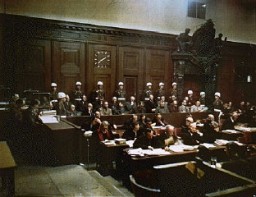
-
Feldafing Displaced Persons Camp
ArticleAfter WWII, many Holocaust survivors, unable to return to their homes, lived in displaced persons camps in Germany, Austria, and Italy. Read about Feldafing DP camp.
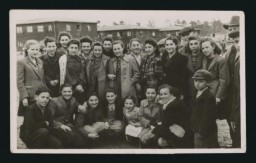
-
Reich Security Main Office (RSHA)
ArticleThe Reich Security Main Office (RSHA), created by Heinrich Himmler, brutally coordinated and perpetrated many aspects of the Holocaust.

-
Evidence from the Holocaust at the First Nuremberg Trial
ArticleProsecutors before the IMT based the case against 22 leading Nazi officials primarily on thousands of documents written by the Germans themselves. Learn more.
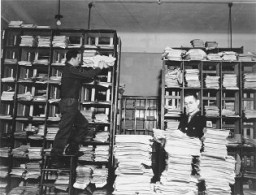
-
International Holocaust Remembrance Day
ArticleJanuary 27, anniversary of the liberation of Auschwitz, is designated by the United Nations General Assembly as International Holocaust Remembrance Day (IHRD).
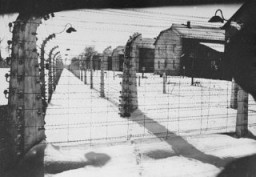
-
Law for the Restoration of the Professional Civil Service
Timeline EventApril 7, 1933. On this date, the German government issued the Law for the Restoration of the Professional Civil Service excluding Jews from civil service.

-
Gertruda Nowak: Maps
Media EssayGertruda Nowak was born to a Roman Catholic family in Poland. The Germans invaded her country on September 1, 1939. Gertruda's father was later accused of working for the Polish underground and taken away. The Germans then came for the rest of the...
-
Szlamach Radoszynski: Maps
Media EssaySzlamach Radoszynski was 27 years old when Germany invaded Poland in September 1939. The following year, Szlamach and the rest of the Jews of Warsaw were forced into a ghetto. After the ghetto uprising in 1943, Szlamach was deported to Auschwitz a...
-
Milk can used to store content of the Oneg Shabbat archives
ArtifactOne of the milk cans used by Warsaw ghetto historian Emanuel Ringelblum to store and preserve the secret "Oneg Shabbat" ghetto archives.This milk can, identified as no. 2, was unearthed at 58 Nowolipki Street in Warsaw on December 1, 1950.
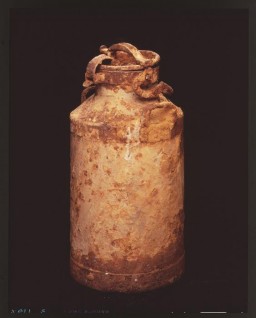
-
Boycott of Jewish Businesses - Photograph
Media EssayOn April 1, 1933—less than 3 months after rising to power—the Nazis staged a nationwide boycott of Jewish businesses. The boycott signaled the start of the Nazi movement to exclude Jews from all aspects of German society.
-
The Boycott of Jewish Businesses - Photograph
Media EssayOn April 1, 1933—less than 3 months after rising to power—the Nazis staged a nationwide boycott of Jewish businesses. The boycott signaled the start of the Nazi movement to exclude Jews from all aspects of German so...
-
New York World Telegram verdict headline
ArtifactThe front page of the New York World Telegram newspaper from Tuesday, October 1, 1946, announcing the sentences of the International Military Tribunal defendants.
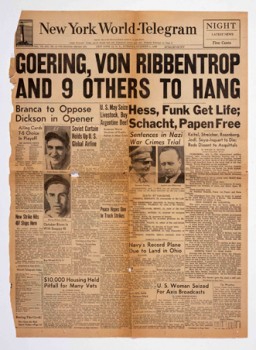
-
Poster advertising anti-Jewish boycott
ArtifactThis poster from Munich, Germany, proclaims the April 1, 1933, boycott of Jewish-owned businesses and services offered by Jewish professionals. It calls on all Germans to honor the boycott, which began at 10 a.m. The poster was signed by the radical Nazi antisemite, Julius Streicher, official organizer of the boycott.
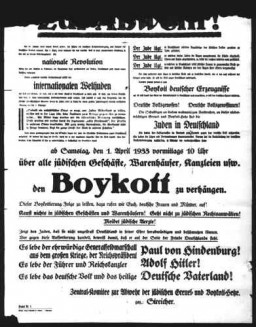
-
"The Nazi Plan": Antisemitic Campaign
Film[This video is silent] The film "The Nazi Plan" was shown as evidence at the International Military Tribunal in Nuremberg on December 11, 1945. It was compiled for the trial by Budd Schulberg and other US military personnel, under the supervision of Navy Commander James Donovan. The compilers used only German source material, including official newsreels. This footage is titled "Opening of the Official Anti-Semitic Campaign 1 April 1933."
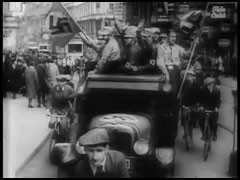
-
Germany invades Poland
FilmGermany invaded Poland on September 1, 1939, beginning World War II. Quickly overrunning Polish border defenses, German forces advanced towards Warsaw, the Polish capital city. This footage from German newsreels shows German forces in action during the invasion of Poland. Warsaw surrendered on September 28, 1939.
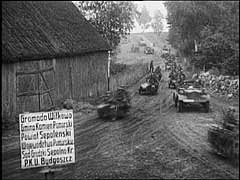
-
German forces enter Warsaw
FilmGermany invaded Poland on September 1, 1939, beginning World War II. German forces swiftly overran Polish border defenses and approached Warsaw, Poland's capital city. Warsaw suffered heavy air attacks and artillery bombardments during the campaign. The city surrendered on September 28. This footage shows German forces entering Warsaw amidst the destruction caused by their bombardment of the city.
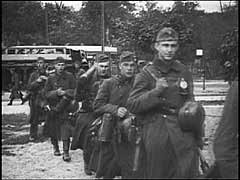
-
German victory parade in Warsaw
FilmGermany invaded Poland on September 1, 1939. The Blitzkrieg ("lightning war") campaign in Poland was short and decisive. Warsaw, the capital of Poland, surrendered on September 27. In early October, Adolf Hitler visited Warsaw to review his forces. This footage shows victorious German army units parading before Hitler in the streets of the devastated city.
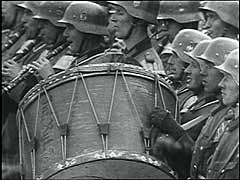
-
Anti-Nazi protest
FilmAdolf Hitler became chancellor of Germany in January 1933. Soon thereafter, terror actions against opponents of Nazism began: Jews were a major target in these campaigns. Many Jews were subjected to public humiliation or arrest, and others were forced to quit their posts. Anti-Jewish measures climaxed with the April 1, 1933, boycott of Jewish-owned businesses. This footage depicts a Jewish anti-Nazi march in Chicago.
